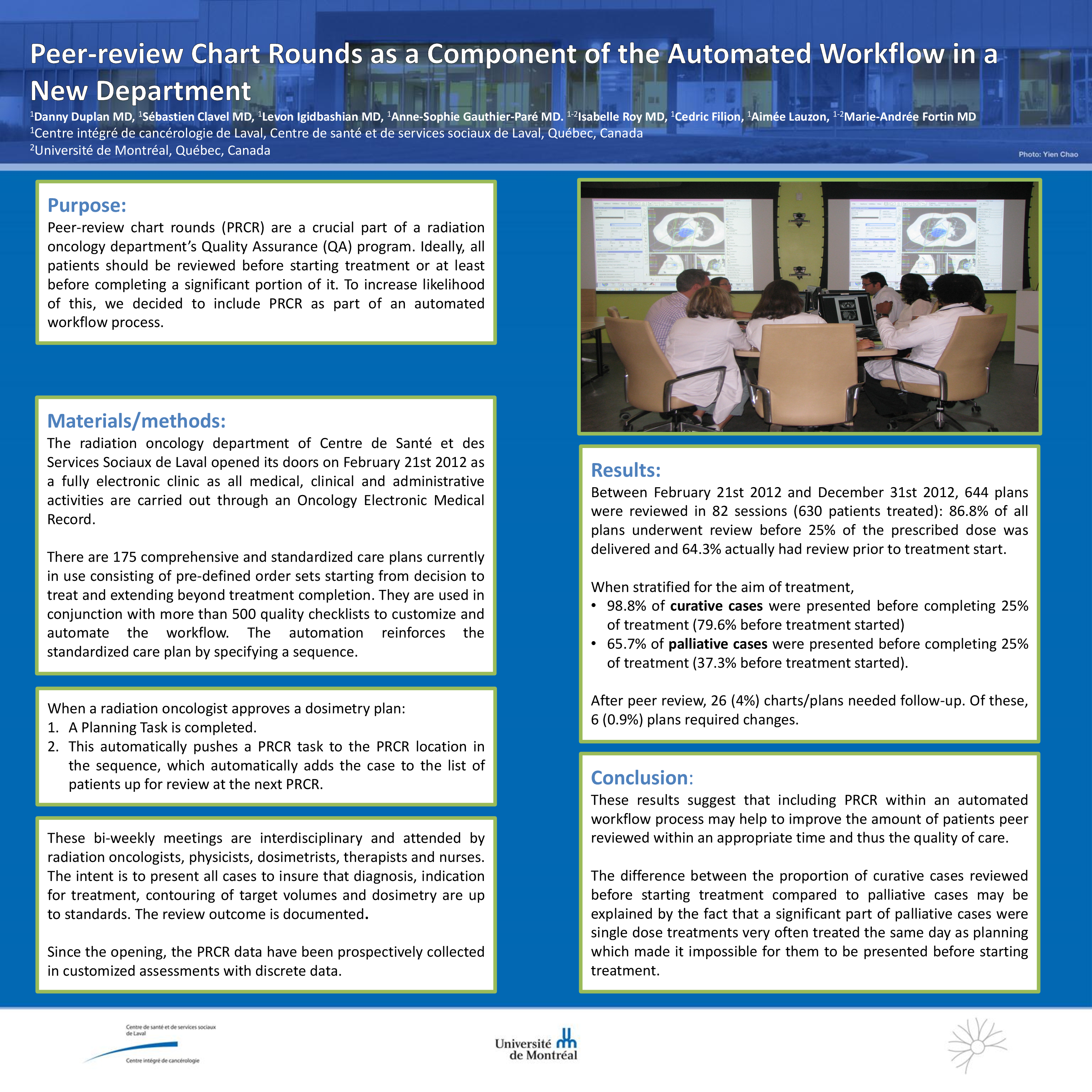Abstract
Peer-review chart rounds (PRCRs) are a crucial part of a radiation oncology department’s Quality Assurance (QA) program. Ideally, all patients should be reviewed before starting treatment or at least before completing a significant portion of it. To increase likelihood of this, we decided to include PRCR as part of an automated workflow process.
The radiation oncology department of Centre de Santé et de Services Sociaux de Laval opened its doors on February 21st 2012 as a fully electronic clinic. There are 175 comprehensive and standardized care plans currently in use consisting of pre-defined order sets starting from decision to treat and extending beyond treatment completion. They are used in conjunction with more than 500 quality checklists to customize and automate the workflow. The automation reinforces the standardized care plan by specifying a sequence. When a radiation oncologist approves a dosimetry plan, a Planning Task is completed. This automatically pushes a PRCR task to the PRCR location in the sequence, which automatically adds the case to the list of patients up for review at the next PRCR. These bi-weekly meetings are interdisciplinary and attended by radiation oncologists, physicists, dosimetrists, therapists and nurses. The intent is to present all cases to insure that diagnosis, indication for treatment, contouring of target volumes and dosimetry are up to standards. Since the opening, the PRCR data have been prospectively collected in customized assessments with discrete data.
Between February 21, 2012 and December 31, 2012, 644 plans were reviewed in 82 sessions (630 patients treated): 86.8% of all plans underwent review before 25% of the prescribed dose was delivered and 64.3% actually had review prior to treatment start. When stratified for the aim of treatment, 98.8% of curative cases were presented before completing 25% of treatment (79.6% before treatment started) and 65.7% of palliative cases were presented before completing 25% of treatment (37.3% before treatment started). After peer review, 26 (4%) charts/plans needed follow-up. Of these, 6 (0.9%) plans required changes.
These results suggest that including PRCR within an auto- mated workflow process may help to improve the amount of patients peer reviewed within an appropriate time and thus the quality of care.





